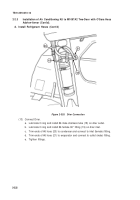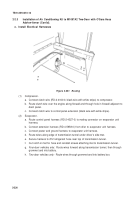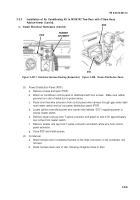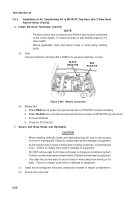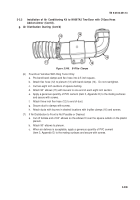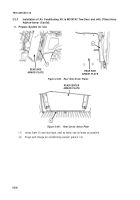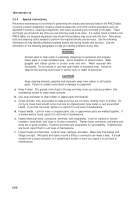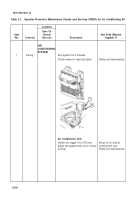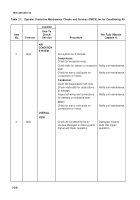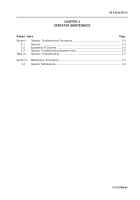TB-9-2510-251-13 - Page 258 of 624
2-242
TB 9-2510-251-13
2-3.4
Special Instructions.
Preventive maintenance is not limited to performing the checks and services listed in the PMCS table.
Covering unused receptacles, stowing unused accessories, and other routine procedures such as
equipment inventory, cleaning components, and touch up painting are not listed in the table.
These
are things you should do any time you see that they need to be done.
If a routine check is listed in the
PMCS table, it is because experience has shown that problems may occur with this item.
Take along
tools and cleaning cloths needed to perform the required checks and services.
Use the following
information to help identify potential problems before and during checks and services.
Use the
information in the following paragraphs to help you identify problems at any time.
WARNING
Solvent used to clean parts is potentially dangerous to personnel and property.
Clean parts in a well-ventilated area.
Avoid inhalation of solvent fumes.
Wear
goggles and rubber gloves to protect eyes and skin.
Wash exposed skin
thoroughly.
Do not smoke or use near open flame or excessive heat.
Failure to
observe this warning could result in severe injury or death to personnel.
CAUTION
Keep cleaning solvents, gasoline and lubricants away from rubber or soft plastic
parts.
Failure to comply could result in damage to equipment.
a.
Keep it clean. Dirt, grease, and oil get in the way and may cover up a serious problem
Use
drycleaning solvent to clean metal surfaces.
b.
Use soap and water to clean rubber or plastic parts and material.
c.
Check all bolts, nuts, and screws to make sure they are not loose, missing, bent, or broken.
Do
not try to check them all with a tool, but look for chipped paint, bare metal, or rust around bolt
heads.
If you find one loose, tighten it or report it to unit level of maintenance.
d.
Inspect welds.
Look for loose or chipped paint, rust, or gaps where parts are welded together.
If
a broken weld is found, report it to unit level of maintenance.
e.
Inspect electrical wires, connectors, terminals, and receptacles.
Look for cracked or broken
insulation, bare wires, and loose or broken connectors.
Tighten loose connectors and make sure
wires are in good condition.
Examine terminals and receptacles for serviceability.
If deficiencies
are found, report them to unit level of maintenance.
f.
Inspect hoses and fluid lines.
Look for wear, damage, and leaks.
Make sure that clamps and
fittings are tight.
Wet spots and stains around a fitting or connector can mean a leak.
If a leak
comes from a loose connector or if something is broken or worn out, report it to unit level of
maintenance.
Back to Top

